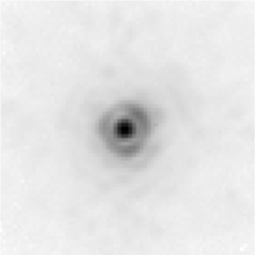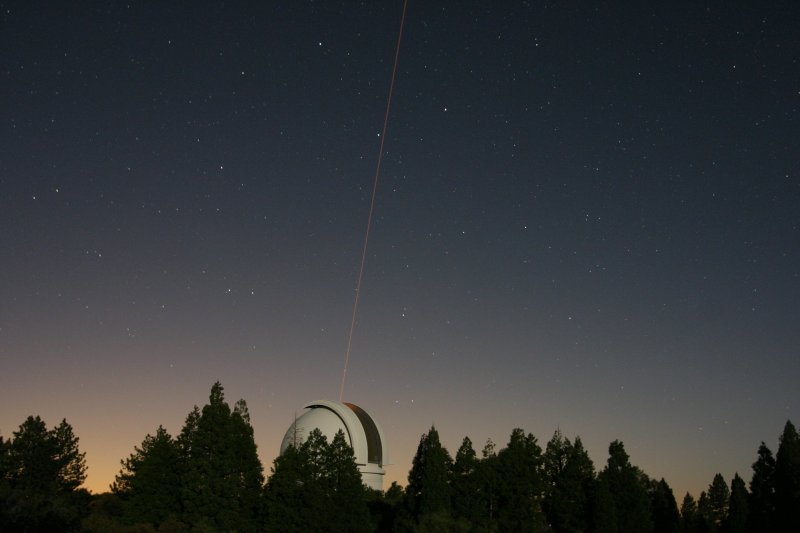Palomar Adaptive Optics System
Overview
The Palomar Observatory, located in north San Diego County California, is owned and operated by the California Institute of Technology. The Observatory supports the research of the Caltech faculty, post-doctoral fellows and students, and the researchers at Caltech's collaborating institutions. Palomar Observatory is home to the historic Hale 200-inch telescope.
The Palomar Adaptive Optics System (PALAO), built by Jet Propulsion Laboratory , corrects for the atmospheric blur of astronomical targets caused by turbulence in the Earth's atmosphere. Science images are obtained using the Palomar High Angular Resolution Observer (PHARO), design and built by Cornell University.
Results
The two images below are results from work performed using the Palomar Adaptive Optics Instrument.The picture on the left was developed using the adaptive optics system in conjunction with the laser guide star on July 29, 2007. The results were: LGS bright star PSF, 2.2 nm, 30s FWHM=0.089", Strehl=48%
The image on the right was taken with the lucky camera, which is part of the LAMP project. The LAMP (LuckyCam) instrument at Palomar combines two telescope image-improvement technologies to obtain the highest-resolution direct images of space ever recorded in visible light.


Glimpse-C01 images compared
The images below are a comparison of a galactic globular cluster discovered with the Spitzer Space Telescope. The image on the left was taken with the Palomar Hale Telescope using the adaptive optics instrument in conjuction with the laser guide star during engineering time on May 24, 2007.
This is the first Palomar Laser Guide Star (LGS) image of a star (mV=10) corrected using the LGS as the reference source for the AO correction. In the equivalent of 1.3 arcsecond visible seeing we achieved a corrected K-band image with a FWHM of 0.16 arcseconds (~1.7x the diffraction limit). This is a major milestone and puts Palomar AO in a class occupied by only a handful of observatories with LGS. The laser power was 6 watts and the high order AO wavefront sensor was running at a frame rate of 150Hz.
Significance of Results
This demonstration illustrates the viability of adaptive controllers for adaptive optics, and presents a practical real-time control implementation. Experimental data using realistic wavefront turbulence show that the adaptive controller is capable of significantly improved disturbance rejection bandwidth. This level of performance is autonomously maintained when the disturbance statistics change significantly, without the need to explicitly re-identify a disturbance model. As future AO systems push for higher wavefront correction, employing similar adaptive controllers could provide significant performance margin, enabling lower cost hardware and adding robustness under non-ideal operating conditions.


Publications
Here is a list of the Technical Publications that were written on the instrument or data taken with the instrument. A partial list of the numerous scientific publications that arose from PALAO is given here: Science Publications
Status
In 2012 PALAO was replaced by the PALM-3000 AO system on the Hale telescope.


